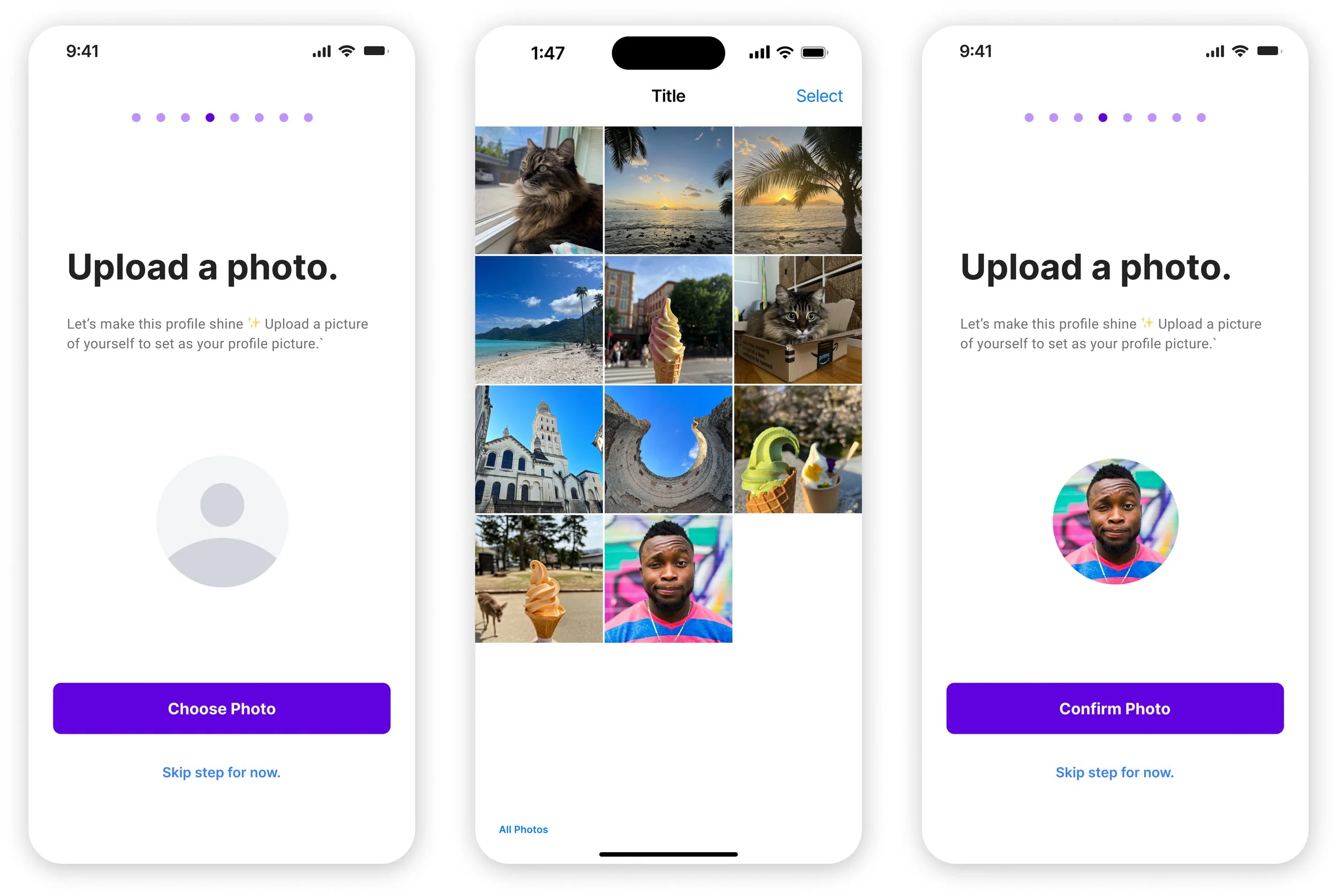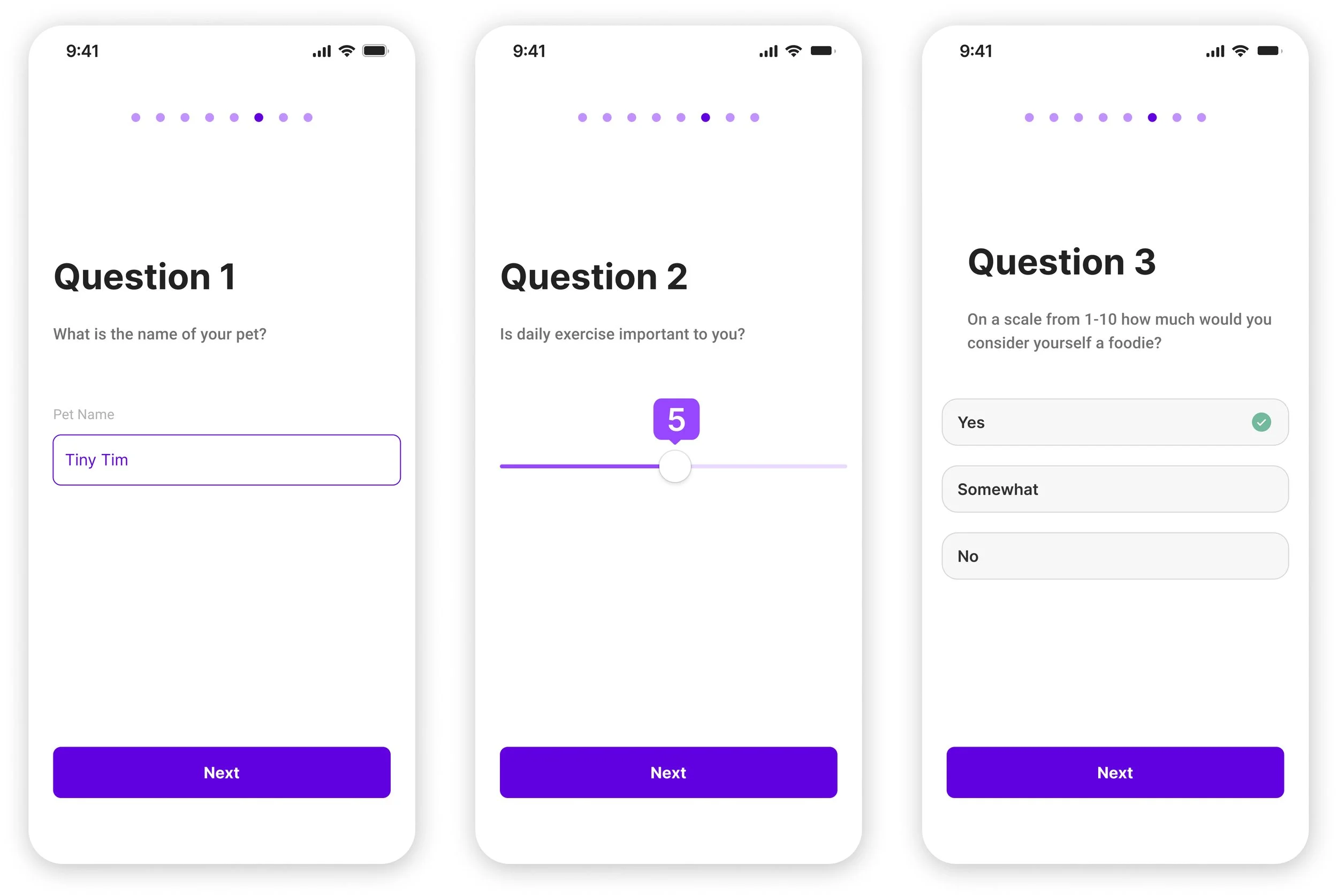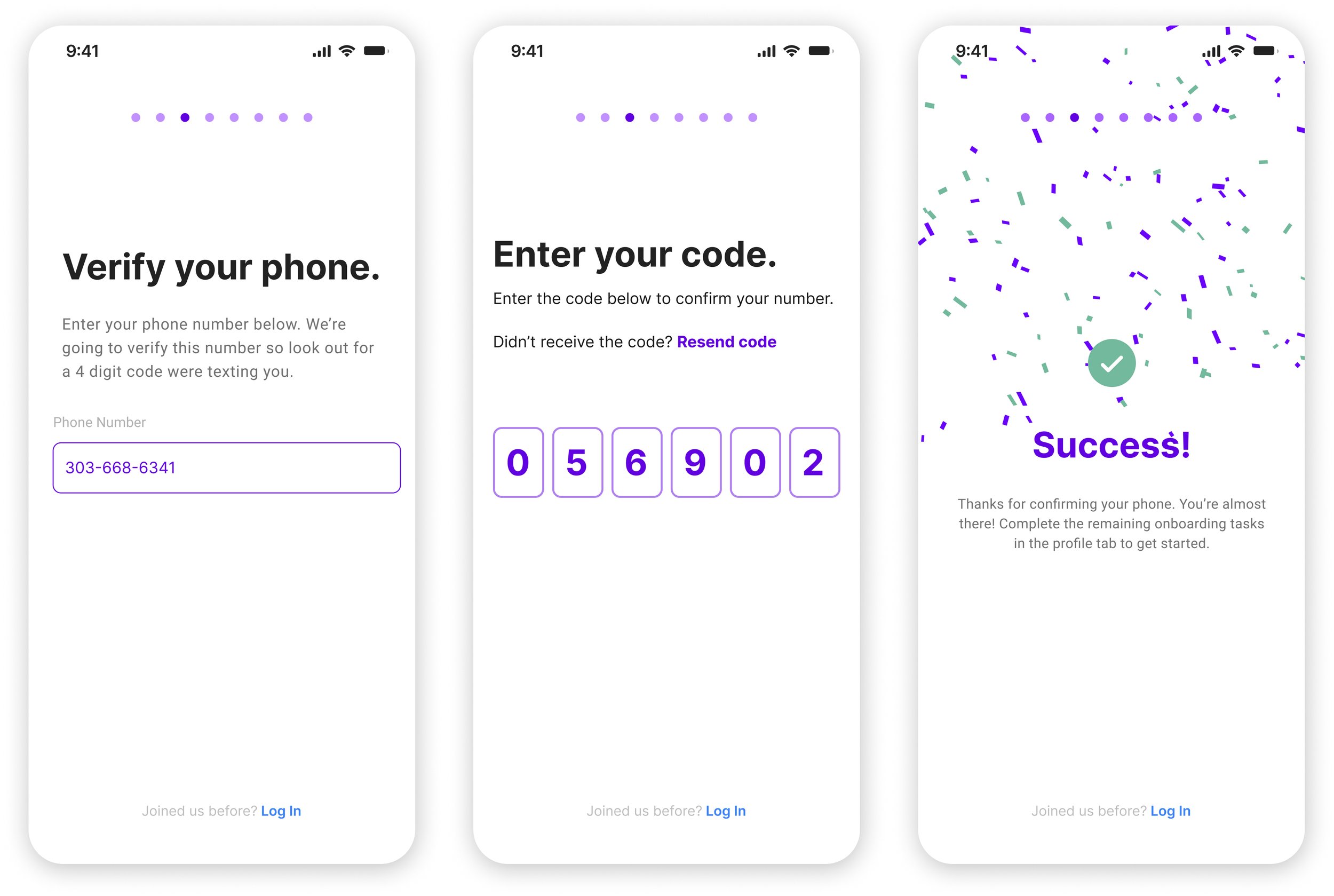Case study #4 - 10K Humans Market Research Company
As the lead designer for this project, I was tasked with creating a seamless and engaging onboarding experience for an app dedicated to gathering reliable market research. My goal was to ensure new users felt guided and confident as they navigated the app for the first time, balancing user-centric design with the need for clear data collection.
This case study outlines my approach to crafting a user-friendly flow that not only enhances usability but also supports the app’s core function of delivering high-quality insights.
-
One of the biggest challenges in market research today is the influx of unreliable data.
Many participants provide false information, motivated solely by monetary incentives rather than genuine responses. This leads to skewed insights, which can mislead companies and undermine the integrity of their market research efforts.The problem we aimed to solve was creating an onboarding experience that not only educates users but also fosters trust, ensuring that participants are genuinely invested in providing accurate and meaningful data.
-
In designing the onboarding experience, we faced several key constraints.
We needed to balance educating users about the app’s purpose with gathering the correct data upfront. I needed to design a onboarding flow that was informative yet efficient, minimizing user effort without compromising the quality of the information we collected. -
Our primary goal was to reduce the number of tasks new users needed to complete once they entered the app, streamlining the experience while ensuring clarity.
Adding a way to vet new users in the onboarding process and to weed out bad actors up front.
-
My role: I served as the Lead Product Designer for this project, working with a team of developers and one product manager.
Timeline: for this project, we had a ten-week timeline.
Programs Used: Figma & Excalidraw
Designing an onboarding experience for new users.
Research Phase
To gain a understanding of user experiences within the app, I conducted research using two primary methods.
Google Surveys: I sent out surveys to users to get their honest feedback on the onboarding experience/app experience. The goal was to find out if there were any tasks they found frustrating or things they didn’t enjoy doing right after signing up. This direct input helped highlight some key pain points, like certain confusing flows or steps that were causing drop-offs.
Internal Analytics: Since 10K Humans is a market research company, I had access to a huge amount of data. I dug into this analytics treasure trove to track user behaviors and identify patterns. By looking at where users were getting stuck or disengaging, I got a clear picture of where improvements were needed.
Insight 1
One of the standout insights from the Google Surveys was that users preferred to personalize their profiles upfront. Many expressed frustration with the current flow, where they had to go back later to choose profile pictures or update personal information.
Users wanted the option to set their profile pictures and fill in key details right after signing up, rather than having to revisit those tasks. This feedback highlighted a clear desire for a smoother, more streamlined onboarding experience where users could complete everything in one go.
Insight 2
The internal analytics provided by 10K Humans offered a wealth of data, and one key takeaway was the impact of verification on user behavior. The data showed a clear trend: users who completed both cellphone verification and identity verification were significantly more likely to be reliable participants in market research. These verified users were far less likely to engage in bad practices, such as submitting false data or participating solely for rewards.
This insight was crucial in guiding the onboarding redesign, as it underscored the importance of verification steps early in the process. By making cellphone and identity verification a more integral part of the onboarding experience, we could filter out bad actors and ensure that the participants contributing to the research were authentic and engaged. This approach ultimately increased the reliability of the data collected, making it more valuable for businesses relying on accurate market insights.
Research Results.
Based off research I gathered in the past phase I then organized things and centered my project goas around three goals.
-
10K humans needs trustworthy people to conduct their market research. In order to do this they dont want people creating multiple fake accounts. To stop this, I decided to implement Stripe Identity Verification Processes in the onboarding flow.
-
New users should have a smooth and easy expereince in the app. Making sure that all the "business" is taken care of in onboarding is a way to ensure that 10K users can get straight to participating in market research projects. Including profile picture selection, personal profile video, and vetting follow-up questions are included upfront are critical to improved user experiences.
-
To ensure that the data collected from users is accurate we want to implement zip code, phone number, and email verification in onboarding. This data can be passed t 10k internal market research teams when looking into where the best reliable candidates are per event.
After conducting my research, I started wireframing my user flow.
After completing the wireframing phase, I work closely with stakeholders and my PM to ensure alignment on the design direction. During this stage, I present wireframes for feedback, addressing any questions about functionality and user flows. I believe collaboration is crucial—incorporating different perspectives leads to stronger outcomes.
As we move forward, I begin transitioning wireframes into low-fidelity designs, rolling them out gradually. This allows us to focus on layout and usability while leaving room for adjustments. At this point, I also begin working on high-fidelity designs, incorporating more detailed visual elements to create a finished concept. By the end of this phase, we have a clearer picture of how the final product will look and feel, ensuring everyone is aligned before moving into full development.
The Solution
To address both the issue of bad actors and improve the overall user experience, I introduced several key changes:
Email, phone number, and identity verification were integrated into the onboarding process, ensuring that only verified users could participate, effectively filtering out unreliable participants.
To meet user needs for personalization, I added options to upload a profile picture and create a personal profile video during onboarding. This allowed users to complete these tasks upfront, making the process more seamless and reducing the burden of follow-up actions after signing up.
These changes not only improved the quality of participants but also created a smoother, more engaging onboarding experience.










